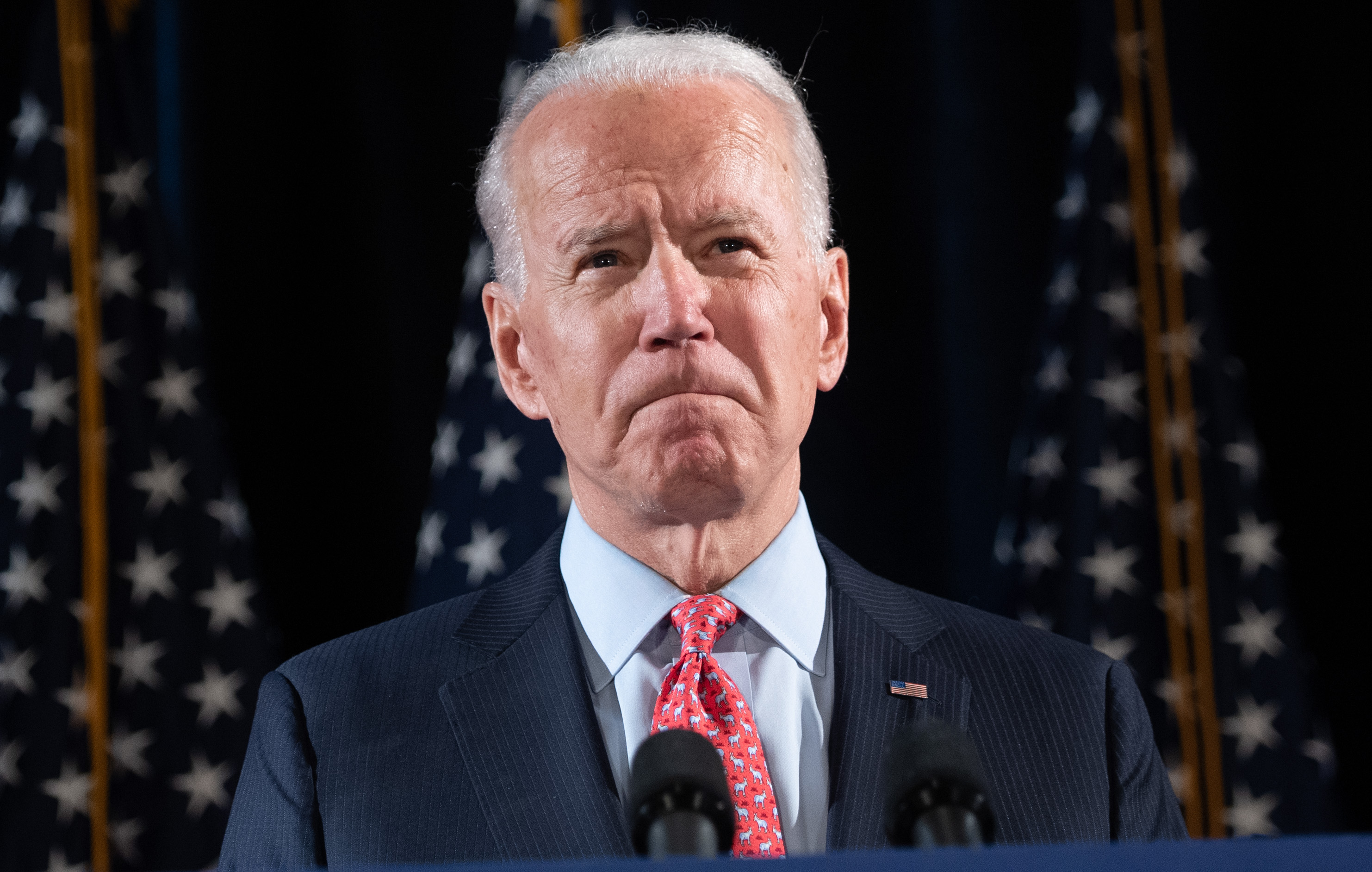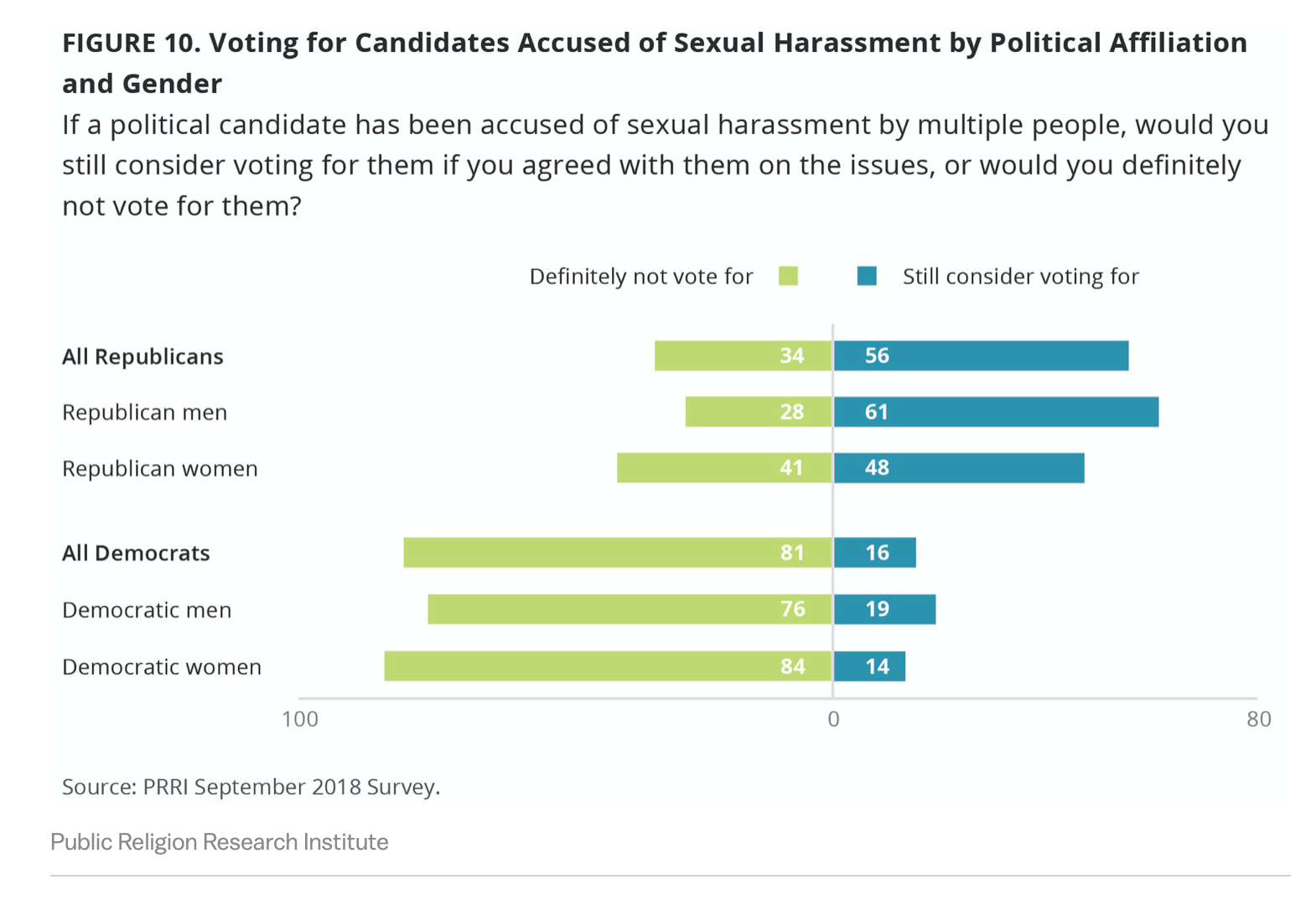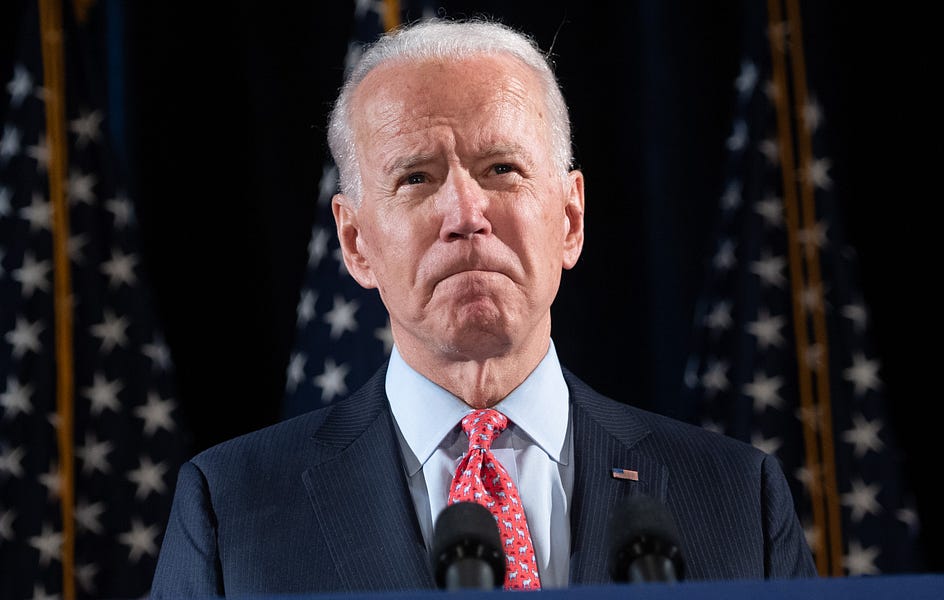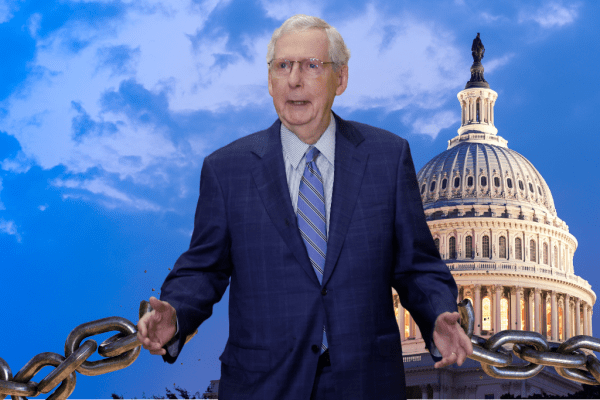Happy Tuesday! We live in such insane times that the Pentagon released three UFO videos yesterday and it barely registered.
Quick Hits: Today’s Top Stories
-
As of Monday night, there are now 988,451 confirmed cases of COVID-19 in the United States (an increase of 22,541 since yesterday) and 56,245 deaths (an increase of 1,369 since yesterday), according to the Johns Hopkins University COVID-19 Dashboard. Of 5,593,495 coronavirus tests conducted in the United States (152,416 conducted since yesterday), 17.7 percent have come back positive. There are 128,673 Americans hospitalized with COVID-19 complications (an increase of 2,026 since yesterday), and 111,509 have recovered from the virus (an increase of 4,464 since yesterday).
-
The recently replenished Paycheck Protection Program began accepting new applications again Monday at 10:30 a.m. after the initial $349 billion in funding was exhausted in a matter of weeks. The Small Business Administration reported it processed more than 100,000 loans from 4,000 different lenders by 3:30 p.m.
-
The New York State Board of Elections canceled its Democratic presidential primary, scheduled for June 23, citing concerns over the spread of the coronavirus. Although Bernie Sanders has suspended his presidential bid, a spokesman for his campaign referred to New York’s decision as an “outrage” and a “blow to American democracy.”
-
Majority Leader Mitch McConnell announced the Senate will return to the Capitol on May 4. “We will modify routines in ways that are smart and safe,” he said, “but we will honor our constitutional duty to the American people and conduct critical business in person.”
-
Beyond fever, cough, and shortness of breath, the Centers for Disease Control added six symptoms to its COVID-19 list: chills, repeated shaking with chills, muscle pain, headache, sore throat, and new loss of taste or smell.
-
The chairman of Tyson Foods took out a full-page advertisement in several newspapers across the country to warn Americans that “the food supply chain is breaking” and that “there will be limited supply of our products available in grocery stores until we are able to reopen our facilities that are currently closed.”
-
The Trump campaign made it clear to the National Republican Senatorial Committee that they’re not happy with the leaked NRSC memo advising candidates not to defend Trump’s coronavirus response and to focus on attacking China. Following threats from the Trump campaign not to support candidates who used such rhetoric, the NRSC is walking back on the memo.
Why Are So Many COVID-19 Sufferers Dying At Home?
Over the last few weeks, we’ve lost count of how many times we’ve written about the difficulties for tracking the coronavirus outbreak presented by our insufficient national testing regime. We’ve also talked about how the most reliable data point for assessing the spread—albeit one that comes in after a substantial delay—is coronavirus deaths. Yet even this figure has been a matter of debate, with some evidence suggesting that official COVID-19 counts might have missed many early deaths when tests were still extremely scarce. (There is also a steady buzz of conspiracy theories insisting that death totals are wildly inflated as part of a hospital get-rich-quick scheme.)
For that reason, there’s another useful metric: total deaths across the U.S., compared with historical averages for the same time of year. This week, newly released federal data, assembled by a research team from the Yale School of Public Health and published Monday in the Washington Post, has given us our first look at those figures from the first few weeks of the pandemic. It shows that between mid-March and early April, something began killing Americans dramatically more quickly than usual—resulting in a total of more than 15,000 “excess deaths,” or deaths above the seasonal average, compared with the same span in a typical year. Reported COVID-19 deaths over the same five-week span totaled 8,128, just more than half that.
What does this number tell us? One thing it doesn’t give us is the exact extent of early COVID underreporting. This figure alone doesn’t distinguish, for instance, between deaths caused by the virus itself and deaths owing to other unusual factors—such as those related to some people being slow to seek out medical attention for non-COVID issues, or those related to our society’s virus response itself.
“I think you do have to acknowledge that excess deaths can occur for any number of reasons,” Dr. Howard Forman, a radiologist and health policy professor at Yale, told The Dispatch. “We know that some excess deaths may have come from increased domestic violence. We know that some excess deaths may occur from overdoses, suicides, things like that that occur because of the general structural interruptions in life that have occurred because of this pandemic. I think you have to acknowledge that.”
“Having said that, most of those excess deaths will occur in younger people in general. And most of the excess deaths we’re seeing are occurring in much older people. And so it’s very compelling to me that the excess deaths that we’re talking about, in aggregate, are mostly due to COVID-19.”
The most useful thing the excess deaths number gives us, then, is a rough sense of the scale of a problem we’ve known about for a while: The difficulties of properly categorizing home deaths among people never tested for the coronavirus. While most hospitals by now are familiar enough with the disease’s symptoms to have a good sense of which of their patients are dying of COVID and which are dying of other things, it’s still sometimes the case that people with COVID symptoms are simply being advised to self-isolate at home unless they grow very ill. If such a person worsens suddenly and dies without ever making it to a hospital at all, he can’t be counted among COVID cases—but will be tallied among the excess deaths.
Excess deaths have spiked well above the numbers accounted for by confirmed COVID deaths in the states including each of the known U.S. coronavirus hotspots: New York, New Jersey, Michigan, and Maryland.
“We’re seeing a relatively small fraction of the total deaths, I think, in the hospitals,” Dr. Forman said. “I’m guessing it’s a large minority are happening inside hospitals or in emergency rooms, but the majority of deaths are happening out in the community, and people are either recognizing it or unrecognizing it, but they’re dying at home. You hear about those cases all the time; it happens really quickly.”
Why are so many dying of COVID-19 at home—worsening and dying, in other words, so quickly that they never have time to make it to a hospital? The going medical theory is that the pneumonia the coronavirus creates does not make its presence known via chest discomfort as quickly as most common pneumonias—that many infected people don’t feel difficulty breathing even as their lungs begin to fill with fluid and their oxygen levels fall.
“The concept here is that unlike a lot of other illnesses that affect the lungs, patients seem to be reasonably comfortable at home, but at the same time if you check their oxygenation of their blood, it’s rather low compared with most other pneumonias,” Dr. Forman said. “But they seem to compensate well for it until they get down to like 93 or 91 [percent], and then they just plummet. And at that point, if they’re not in the hospital and they don’t have access to oxygen and other therapeutics, they basically die within a matter of hours. And those people are the ones that you’re hearing about that died in front of a TV set, sometimes alone. A lot of elderly people are living alone, and they’re getting by, and they’re on the phone with their family saying, ‘I’m sick, but I’m okay, don’t worry about me.’ And then they’re dead.”
To combat this, many doctors have begun recommending home use of a device known as a pulse oximeter, which clips to the finger and uses an infrared beam to measure oxygen saturation in the blood through the skin. Since dropping oxygenation is a sign that the respiratory system is beginning to fail, such a device can make a patient aware that their situation is deteriorating even if they are not yet beginning to feel shortness of breath. As the pandemic stretches on, and the issue of home deaths comes into sharper and sharper focus, widespread use of such home monitoring devices may be the best weapon we have to fight back against this awful phenomenon.
The Allegation Against Joe Biden Is Gaining Steam

Several weeks ago, Tara Reade—who served as a staff assistant in then-Sen. Joe Biden’s office from December 1992 to August 1993—accused the former vice president and presumptive Democratic nominee of sexual assault.
In an interview on the Katie Halper show, Reade said she was told to meet Biden in the Capitol and bring him a gym bag. Once the two were alone—per Reade’s recounting—the senator “had [her] up against the wall” and put his hands underneath her clothes before kissing her and penetrating her with his fingers. Reade said she pulled away, at which point Biden exclaimed, “C’mon man, I heard you liked me.”
Kate Bedingfield, the Biden campaign’s deputy campaign manager, has vehemently denied the allegations. “[Vice President Biden] firmly believes that women have a right to be heard—and heard respectfully,” she said in a statement. “Such claims should also be diligently reviewed by an independent press. What is clear about this claim: It is untrue. This absolutely did not happen.”
The New York Times published a lengthy piece examining Reade’s claims 19 days after she went public with them. Lisa Lerer and Sydney Ember interviewed dozens of people who might have had knowledge of such an incident and concluded: “No other allegation about sexual assault surfaced in the course of reporting, nor did any former Biden staff members corroborate any details of Ms. Reade’s allegation. The Times found no pattern of sexual misconduct by Mr. Biden.”
For nearly two weeks, the story stalled there. A he-said-she-said, where the he was a heartbeat away from the presidency for eight years, and the she was an advocate for domestic violence survivors in California who one year earlier had accused her former boss of “put[ting] his hand on [her] shoulder and run[ning] his finger up [her] neck,” a different—and less weighty—allegation than the one she was currently making. Biden and his allies were ready to move on.
But reporters continued to dig. Reade has said she contemporaneously told her mother, her brother, and a close friend about the harassment and assault she allegedly experienced. Her brother and friend have both confirmed this, but her mother passed away in 2016. On Friday, however, Ryan Grim of The Intercept unearthed an August 1993 episode of Larry King Live in which a woman—whom Reade has since confirmed as her mother—called into the show from San Luis Obispo, California, asking King for advice on what her daughter, a Senate staffer, should do if she “could not get through with her problems at all.”
On Monday, Rich McHugh of Business Insider got another two people on the record who remembered Reade telling them in the mid-1990s of her alleged assault. Lynda LaCasse—a former neighbor of Reade’s in Morro Bay, California—said “this happened, and I know it did because I remember talking about it.” Lorraine Sanchez—a former co-worker of Reade’s in the California State Senate—remembered Reade saying “she had been sexually harassed by her former boss while she was in DC.”
Now What?
Biden has thus far been able to avoid addressing Reade’s allegation himself—in part because he’s campaigning from his basement, and in part because the (few) outlets his team has granted interviews to in recent days have neglected to ask him about it.
This sheltered existence won’t last forever. Members of the Trump campaign have thus far treaded carefully around the allegation, choosing to focus on what they argue is biased media coverage of the story rather than the actual substance of Reade’s accusation. But they are beginning to circle the issue. In a statement provided to The Dispatch Monday night, Trump campaign deputy press secretary Ken Farnaso weighed in on the latest reports.
“It comes as no surprise that the Democrats and mainstream media have given Joe Biden a pass on his sexual assault allegations. There is contemporaneous corroborating evidence of Biden’s alleged wrongful actions that didn’t exist for Judge Kavanaugh during his confirmation hearing, where there was virtually no supporting evidence at all,” Farnaso said. “Whether it be the CNN/Larry King recorded phone call, the interview with Ms. Reade’s neighbor near the time of the assault (who happens to be a Biden-supporting Democrat), or the multiple women who have accused the former vice president of inappropriate touching, there’s no doubt that there is a double standard that exists. Any reporter throwing softballs at Biden and not confronting him with these allegations is exhibiting that double standard. It’s baffling that nearly everyone in American politics has been asked for a reaction to this except Joe Biden himself. Is he off-limits?”
The Biden campaign did not respond to a request for comment.
Farnaso has a point—it’s difficult to see a Republican nominee for president accused of sexual assault receiving the hands-off media treatment Biden has over the past month. Unfortunately for the Trump campaign, we know this because Donald Trump himself has been accused of sexual harassment or assault by at least 17 women, several of whom have presented contemporaneous confidantes similar to Reade. Trump was notoriously caught on tape in 2005 bragging about “grab[bing women] by the p—-y.” The president—or his various spokespeople—have denied all the allegations, and dismissed the recorded comments as “locker-room banter.”
A poll from the nonpartisan Public Religion Research Institute in September 2018—fresh off the Brett Kavanaugh confirmation fight—found that 56 percent of Republicans said they would consider voting for a political candidate who had been accused of sexual assault by multiple people, compared with just 16 percent of Democrats.

Prominent Democrats—from former President Obama, to Sen. Elizabeth Warren, to Sen. Bernie Sanders—have continued to roll out their endorsements of Joe Biden’s candidacy well after Reade’s allegation came to the surface in late March. Speaker Nancy Pelosi endorsed the former vice president just yesterday.
The Coronavirus Task Force’s Updated Testing Regimen
On the subject of testing: President Trump rolled out his administration’s latest plan to keep increasing coronavirus testing across the country.
“Our blueprint describes how states should unlock their full capacity, expand the number of testing platforms, establish monitoring systems to detect local outbreaks, and conduct contact tracing,” Trump said, during yesterday’s coronavirus task force press briefing. “We have it all.”
The federal government’s testing operation, as the White House’s experts explained it, is already seven steps deep in an eight-step program: the infrastructure for diagnostic tests is in place, the private sector has been galvanized, and so on. What remains, Adm. Brett Giroir asserted, is simply step eight: “Coordinate with governors to support testing plans and rapid response programs” in order to open the country back up again.
To accomplish this last task, the federal government is focused on three core objectives: expanding testing capabilities, creating systems to identify new cases, and launching rapid response programs to treat new cases and prevent further spread. It’s clear that the White House sees itself in a support role here: In keeping with the president’s recent rhetoric, the blueprint reads: “Testing plans and rapid response programs will be federally supported, state managed, and locally executed.” The monitoring systems will receive technical support from the federal government but will be left to the states to create and run.
The federal government will also expedite “regulatory authorizations for tests and testing equipment” and “publish and update procedural guidance for administering diagnostic tests.” The White House blueprint says the federal government will “act as supplier of last resort.”
Worth Your Time
-
Did you know that the man who plays right guard for the Super Bowl champion Kansas City Chiefs has a doctorate in medicine? This Sports Illustrated story about how Laurent Duvernay-Tardif is spending the offseason fighting the pandemic at a long-term care facility in Quebec is an amazing read.
-
National Review has a new editorial up about the hypocrisy of the Biden campaign’s response to the Tara Reade allegation, and much of the media coverage of it. “Both culturally and legally, due process must be habitually applied to nobody or to everyone. If, upon the most frivolous and protean of pretexts, it is routinely accorded to one faction while being denied to another, it is effectively lost.” It’s a tour de force, and you can read it here.
-
We haven’t heard much recently from Andrew Yang, whose longshot presidential campaign went much deeper into the race than anyone expected thanks to an unorthodox, almost fatalistic approach to governance that won him a weirdly nonpartisan coven of highly loyal fans. The Atlantic’s Edward-Isaac Dovere recently caught up with Yang for a lengthy and interesting interview about the coronavirus crisis and the risks it poses to our already tattered sense of shared humanity.
Presented Without Comment
Toeing the Company Line
-
The latest episode of Advisory Opinions features Sarah and David talking 2020 polling and the Supreme Court’s decision to dismiss a gun rights case before being joined by the U.S. Chamber of Commerce’s Steven Lehotsky to discuss how businesses are dealing with liability issues as they prepare to eventually reopen.
-
If that doesn’t satisfy your David French itch for the day—and remember to pace yourself, he’ll have another French Press in your inbox later this afternoon—you can check out this transcript of his recent debate with Eric Metaxas over evangelicalism and Donald Trump.
-
On the site today, Samuel J. Abrams looks at some recent polling data from Pew Research Center. While Americans do remain divided about President Trump and his response to the coronavirus pandemic, we are not nearly as polarized on important matters such as canceling major events and closing schools to help mitigate the impact of the virus.
Let Us Know
This pandemic is certainly teaching us a lot about our government, our society, and each other. But what is something new you’ve learned about yourself over the past several weeks?
Reporting by Declan Garvey (@declanpgarvey), Andrew Egger (@EggerDC), Sarah Isgur (@whignewtons), and Steve Hayes (@stephenfhayes).





Please note that we at The Dispatch hold ourselves, our work, and our commenters to a higher standard than other places on the internet. We welcome comments that foster genuine debate or discussion—including comments critical of us or our work—but responses that include ad hominem attacks on fellow Dispatch members or are intended to stoke fear and anger may be moderated.
You are currently using a limited time guest pass and do not have access to commenting. Consider subscribing to join the conversation.
With your membership, you only have the ability to comment on The Morning Dispatch articles. Consider upgrading to join the conversation everywhere.